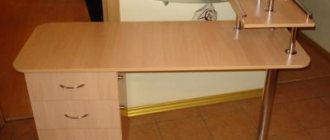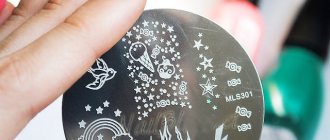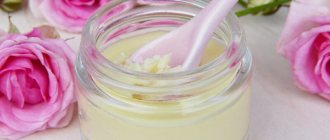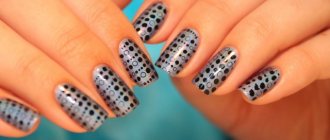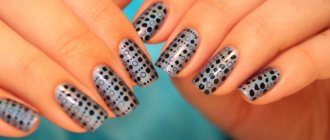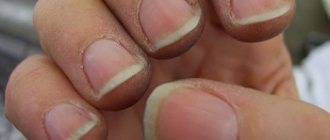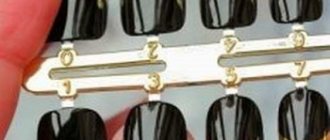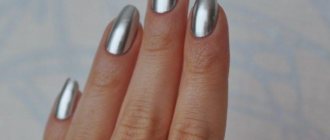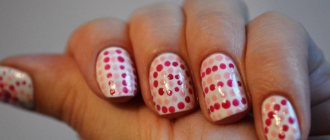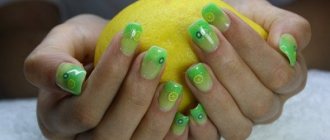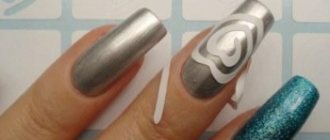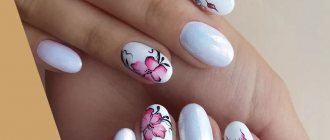Good day!
We will talk about solving such a problem as the polymerization of finished 3D models after printing on LCD 3D printers, for example, on ours - Anycubic Photon S. This printer prints on the basis of photopolymer resin - after printing, the models are washed in isopropyl alcohol, but the models themselves remain sticky, soft.
The premise for this writing was the urgent and immediate need for a lamp to cure printed models before painting. Analysis of the Internet showed the absence of ready-made budget lamps for sale - strange, given how widespread 3D printers are now... In any case, I hope the article will be useful to those who are starting to print on photopolymer and are faced with the problem of drying printed models.
How powerful should a manicure lamp be?
Once you have decided on the type of lamp, you need to pay attention to its power, as this is one of the most important parameters. The intensity of the heating elements located in the lamps depends on it.
On the market you can find devices with power from 9 to 90 W.
But 48 W lamps are considered the most optimal. And there are several explanations for this:
- the lower the power, the longer the polymerization time of the material;
- if you apply the coating in a thick layer, it may not dry and shrink;
- Some gel polishes are highly pigmented and low power lamps may not dry them.
But don’t give up on lamps with low power! Among them there are small and lightweight options that are convenient to take with you, for example, if you want to take the lamp on a long trip or go to a client’s home, etc. The main thing is to choose the right material and not apply it in a thick layer.
Dimensions and weight
The choice of a lamp of one size and weight depends solely on your preferences.
If the lamp is needed only for use at home or you are a beginner and plan to receive clients on your premises (at home, in a salon), then the weight and dimensions of the lamp are not of great importance.
If your plans include frequent transportation of the device from point A to point B, then you should pay attention to lightweight, miniature models.
Go
According to the instructions for the resin, the hardener for it is UV light with a wavelength of 400-405 nm. A proven solution would be to buy a branded dryer for the printer, but the price is not at all understandable - with a printer budget of 32 thousand rubles, paying another 23 for a box with LEDs is kind of a barbarity.
The solution is to make a lamp yourself from available components. Were purchased:
- UV 3W LED Unit - 19 pieces for 68 rubles (bought offline in my hometown, apparently these are from Ali)
- LED driver stabilized for a current of 600 mA at 22-38 volts (spoiler: it immediately died and was replaced with this one) - 450 rubles
- Table lamp ERA NL-202 black - the quality is below the baseboard, but suitable for cramps - 1299 RUR
- Radiator in Chip and Deep - 170 RUR
- Hot melt adhesive - 190 rub.
- 2 meters of fire-resistant cable - 60 RUR
Since our lamp has the shape of a boat, we adjust the radiator under it:
We disassemble the lamp itself and throw out all the guts:
The first option for arranging LEDs: 9 pieces in series connection - total consumption 32.4 volts 600mA.
We prepare jumpers:
Degreasing the radiator:
Apply glue:
We drill the finished radiator with glued units - we will use the remaining standard holes for self-tapping screws:
Let's get contacts:
We solder everything sequentially:
Done: try on the driver, which fits exactly into the standard place of the lamp electronics
How to make a nail polish dryer with your own hands
There are several options for making lamps for drying nails. First you need to decide on the type of light sources used. Let's look at some of the ways to assemble these devices.
UV lamp for nails
To make this device, rated at 18 W, you will need to buy some parts, the cost of which is not too high. The set of lamps for drying gel polish includes:
- an old computer power supply that you no longer need;
- two ultraviolet lamps with a power of 9 W each;
- electronic ballast, designed for the power of two lamps - 18 W;
- wire with which the device will be powered.
First, you will need to get to the insides of the lamp, removing its base. To do this, you need to cut off the legs and remove the base. There may be a starter and a capacitor inside the lamp, which should be removed as unnecessary. Only the power wires remain. The same operation must be performed with another lamp. Now you need to connect both lamps in series with respect to the electronic ballast. A cable is connected to the power terminals, which will be connected to a 220 V network.
The next step is to assemble the housing. For better drying and a reflective effect, it is better to cover the inside of the power supply with reflective foil or other similar material using double-sided tape. One of the sides can be bent, thereby freeing up space for ballast, and a window for the hands will appear. You can secure the lamps using the same tape or mounting clamp. All that remains is to assemble everything into a single product and check its operation.
LED lamp for drying nails at home
In this case, any object that is suitable in size and suits the consumer from an aesthetic point of view can be used as a housing. It could even be a large junction box.
Applications of LEDs
In this design, the main element is a driver rated at 27 W and nine LEDs with a power of 3 watts each. It should be remembered that before choosing drivers, you need to study the parameters specified by the manufacturer in the instructions for the LEDs. The LEDs are connected in series to each other and soldered to the driver terminals. It is advisable not to confuse “+” with “-”.
Inside the body of the future DIY UV nail lamp, you will need to make a radiator in the form of fins to cool the LEDs. To do this, you can use what you have at hand, for example, an aluminum profile. Just as in the first case, you will need to perform light reflection inside the case and provide space for your hands.
UV lamp with DRL lamp
To assemble a device for drying varnish using this method, you will need the following parts:
- electronics from an energy-saving lamp with E27 socket;
- UV lamp, which is used in banknote checking devices;
- terminal blocks;
- cartridge for E27 socket;
- cable for powering the device.
The leads from the UV lamp are connected to the terminal blocks, and on the other side of them are screwed wires that will be soldered to the terminals of the board. Wires going into the flask are placed on these contacts, which need to be removed. After soldering, the base is assembled back and screwed onto the cartridge.
The resulting product must be placed in a housing. For the body, you can use the items listed in the first two cases. There may be several lamps; they should be selected experimentally.
This review is suitable for those who need an ultraviolet lamp to dry nail polish and do not want to overpay for the finished product.
First start
The switch-on was successful, the LEDs provided powerful diffused light. 2 minutes - the radiator began to noticeably warm up. 5 minutes - the LEDs began to blink, the radiator became hot like an iron - the system was urgently turned off. My mistake was that I did not check the supply voltage from the driver in time - and it was around 41 volts, that is, initially there was something wrong with the driver.
After the first turn on and a test of 5 minutes - the driver constantly began to ripple at about 1 hertz - I still did not understand what happened.
I did a little digging on the driver board from the sealant, but not having sufficiently deep knowledge of continuity testing, I simply wrote it off as scrap:
Assembling a lamp from LED strip
Let's look at the step-by-step creation of a 220 V light source from an LED strip. To decide to use an innovation in the kitchen, it is enough to remember that LED lamps assembled by yourself are significantly more profitable than their fluorescent counterparts. They live 10 times longer and consume 2–3 times less energy at the same lighting level.
Let's summarize and find out the advantages of the assembled product:
- The amount of light from the resulting LED lamps is 1.5 times greater than that of their fluorescent counterparts.
- The power consumption is much less than that of fluorescent lamps.
- The assembled light source will last 5–10 times longer.
- Finally, the last advantage is the direction of light. It does not dissipate and is directed straight down, so it is used near the desktop or in the kitchen.
Useful tips Connection diagrams Principles of operation of devices Main concepts Meters from Energomer Precautions Incandescent lamps Video instructions for the master Testing with a multimeter
Work on mistakes
As a result, the tested LS-AA-2.1 - 12V at 2.1A was removed from the reserves.
It was necessary to recalculate the volt-ampere switching circuit for it. Considering that the power supply has voltage regulation, it was decided to make a matrix of 4 rows in series, 4 units in parallel. Thus, we get 525mA power supply for each unit (at 600mA according to the datasheet), and adjustable in the range of 8 to 14 volts (approximately 2 - 3.5 volts for each unit). Roughly speaking, in terms of current it is quite a gentle mode, but in terms of voltage there is room for selecting the optimal range. This is what it looks like:
Test activation at 13.43V:
The flight was normal, I waited 5 minutes - the radiator was getting very hot again, but I decided to leave this issue until complete assembly and debugging.
We refine the connections with heat shrink:
The new driver board, although it protrudes from the aluminum case, does not fit into any regular place. I decided to put it back into the case and fit it on top of the lamp - household steam punk.
General form:
During debugging, one 4-chain of LEDs began to fall off (turn off), I associate this with the previous crash - after all, some units “floated” from their factory characteristics. It’s sad, but you also have to live with this somehow.
At 3.5 volts per unit, the system worked stably for about 10 minutes until it warmed up to about 60 degrees (radiator) - then the same 4x chain began to fail.
I decided to drill radiator holes on top to remove heat:
The most stable result was obtained at 3.15V per unit - the system never blinked and provided enough light. The temperature does not rise above 51C:
During testing:
How to choose the right ultraviolet lamp for your home
The initial data for selection are the volume of the room and the intended main purpose of the lamp. In addition, safety glasses are required.
There have been cases in the past of producing UV emitters with reduced power, but the practice of using them for a long time has proven to be ineffective.
For preventive purposes and for disinfection of premises, it is worth using multifunctional lamps. Things to remember when choosing a UV source:
- The optimal power of such a device is set from the ratio of 125 W for every 15...20 m3 of room;
- The duration of treatment of a room with a UV emitter should not exceed 15 minutes;
- During the irradiation process, all pets and plants must be removed from the room;
- There are stationary and portable UV emitters.
Ultraviolet lamps are also used for highly specialized purposes. In particular, after relevant research, it was decided to recommend UV emitters for use in caring for nails and body skin (fixing gel polishes, waxing, depilation, etc.). Such lamps are distinguished by their small dimensions and power, which in most models does not exceed 10W.
The design feature of these emitters is timed on/off, as well as a wider spectrum of ultraviolet waves (up to 280 nm versus 210...240 nm for general purpose UV emitters).
Recommendations
The main recommendation would be to choose highly professional craftsmen who know their business.
The risk of infection or allergic reactions may increase if you have skin infections or inflammations.
Before visiting a specialist, it is better to treat all problem areas so as not to cause even more harm.
It is also necessary to periodically stop these procedures in order to take courses to improve the health and nutrition of your skin and nails. To keep your skin well-groomed and free from defects, you should regularly do spa treatments.
If all else fails, experienced cosmetologists recommend avoiding applying gel polishes to your nails, which require ultraviolet lamps to dry.
They are well replaced by fortifying agents rich in vitamins. In their characteristics and appearance, they resemble light-colored gel polishes. Also, for such cases, manufacturers produce weekly varnishes that are not harmful to health.
Gel polish: advantages and disadvantages
There is not a single woman who is not familiar with gel manicure. This modern nail coating is a kind of synthesis of gel and varnish.
It includes several components:
- base;
- color base;
- upper layer.
Thanks to the extensive color palette, this coating can be used to create manicures of various designs that satisfy any taste.
In addition, we can highlight a number of positive features of gel polish:
- Strengthening and protecting the nail plates, possible thanks to the thick, hard shell created by gel polish. Even fragile nails covered with such a layer do not break or peel.
- Long wearing period. This manicure can last about a month (on average three weeks) if done correctly. This is well suited for women who, for some reason, cannot visit the specialist often.
- Possibility to combine with extensions. Many girls love long nails, but not everyone is able to grow them without first strengthening them with gel. Gel polish coating allows you to increase the length of the nail artificially for the first time.
The negative qualities of the gel coating include:
- The method of treating the nail plate before applying such a product requires removing the top layer with a special nail file. As a result, the nail becomes thinner and its integrity is compromised.
- The mandatory use of a UV lamp to fix the manicure has a negative effect on the skin of the hands and accelerates the aging process. However, this problem can be easily corrected with the help of a special cream with UV protection or a simple sunscreen lotion.
- It is necessary to remove gel polish only with means intended for this purpose, and even better - in a salon. Often women simply tear off pieces of the coating, not thinking about the fact that the nail is destroyed along with them.
- It is believed that gel manicure performed regularly without breaks weakens the nail plate, makes it brittle, and leads to delamination.
